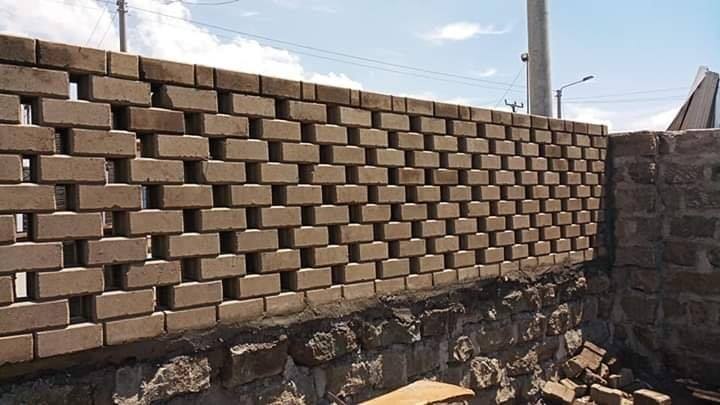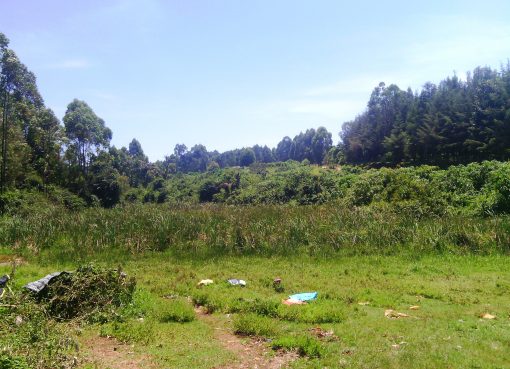In order to boost the supply of affordable housing, the County government of Nakuru is advocating for the adoption of alternative building technology that uses cheaper materials compared to conventional stones.
County governor Lee Kinyanjui said that his administration has set up Alternative Building Materials Technology Centers (ABMTC) at Mirera, Kagoto and Molo polytechnics to train and equip the youths with skills in the manufacture and use of cheaper building materials.
“Each of the centers is equipped with machines designed to help in the manufacture of alternative building materials. Recently the County acquired three high capacity Hydraform Interlocking Brick (HIB) making machines to help train the youth on production of the building blocks.
The use of alternative building materials other than stones could cut the overall cost of construction, reduce the total time taken to put up a building, hence increase home ownership in a country grappling with a shortage of houses,” said the governor.
He says that Technical Vocational Education Training Institutes (TVETS) and Youth polytechnics if well-funded, equipped and given grants to conduct research have the greatest potential to come up with new technological innovations that will see future houses being made in record time with or without use of brick and mortar.
The County boss said Vision IV Youth Housing Cooperative Society Limited has also been identified to offer training in Alternative Building Material Technology (ABMT) in partnership with the Department of Land, Housing and Physical Planning under the Directorate of Housing.
The Department has also been tasked with providing prototype house designs targeting the low income areas and informal settlements.
Lands, Housing and Physical Planning County Executive Committee Member Francis Mwangi observed that the real estate market was under grip of well-financed few, consigning many to being tenants who live in houses they can hardly put up on their own.
He decried what he described as “the apparently selectiveness in the real estate sector” as many developers only have rich and middle-class income earners in mind when putting up housing units.
“With the cost of land and building materials ever-rising and developers mainly targeting the high-end market, potential homeowners should go the unconventional way when looking for solutions. We want to equip our youth in polytechnics and Technical Vocational and Educational Institutions (TVETS) with skills that will provide practical solutions through innovations.
The alternative building technology will allow and afford the country to meet its ambitious housing plan provided by the government and as a result solve the housing shortage in different parts of the country,” said the CEC.
Mwangi said that heavy investments in training of craftsmen in the manufacture and use of alternative building technology will also revolutionize the country’s industrial sector.
“It is very possible to have a future where metal structures are brought on site with heavy, factory produced slabs and walls being fitted with these structures.

“I am very sure that one day, we will be buying ready-made factory houses resembling shipping containers being purchased by individuals and hauled to a housing site. Such movable or manufactured homes come with wheels and can be attached to a truck to be hauled where the homeowner wants them. This will happen if we invest in training our youth on these technologies,” observed the CEC.
Once installed on site, these homes can be connected with water and electricity or even sewer services, he noted, adding that maintenance costs would be low compared to modern houses.
Chief Officer in Charge of Lands Housing and Physical Planning Judy Leah Waihenya observed that the County’s initiative to promote use of alternative building technologies had already been recognized at the World Urban Forum in Malaysia as a key driver to one of the National Government’s Big 4 agenda to provide affordable housing.
“As a department we will establish two more Alternative Building Materials Technology Centers (ABMTC) at Lare and Rongai Polytechnics within Njoro and Rongai sub counties.
We are collaborating with the departments of Youth, Sports and Culture and that of Trade Tourism and Cooperative to identify youth and housing Savings and Credit Cooperative Society Members who will be registered and trained at these centers on the new alternative building technologies” stated Ms Waihenya.
In the new technology being propped up by the devolved unit, the bricks are broad compared to quarried ones and are placed one upon another without any need of binding mortar, something that is helping builders cut down on construction costs.
The bricks are designed to be arranged in such a way that there is no room for creating lines of weakness.
At the ABMTC centres, trainees will also be equipped with technical skills on the use of red earth, or any slow draining soil as likely commercial venture in making building blocks the long-run in event quarrying is exhausted.
“The training is also fashioned to encourage individuals in rural settings to bake mud bricks, dry them in the sun and build houses with sticky clay being used as mortar.
Vagaries of weather, like rain, will have little effect. There is also no need to keep pouring water on the outside during the drying process, known in construction lingo as curing,” stated Ms Waihenya
In Hydraform Interlocking Brick (HIB) building technology the foundation filler can be anything from crushed stones to sand and cement or simply concrete slabs.
Though materials like sand and cement would be greatly halved in usage, one would still need them during the interior plastering process. This casting acts as a binding method for the laid-up bricks.
Waihenya said this is cost-effective compared to purchasing materials, noting that the building can be strengthened inside and outside with a screed of plastering for added strength and durability, which gives the house a permanent outlook.
By Anne Mwale



